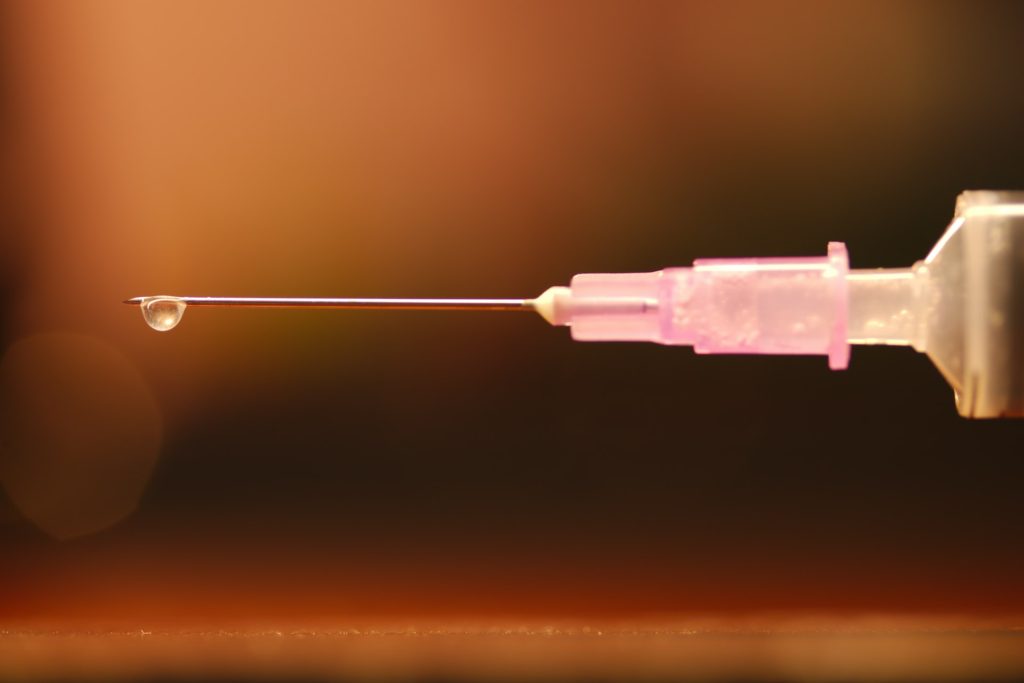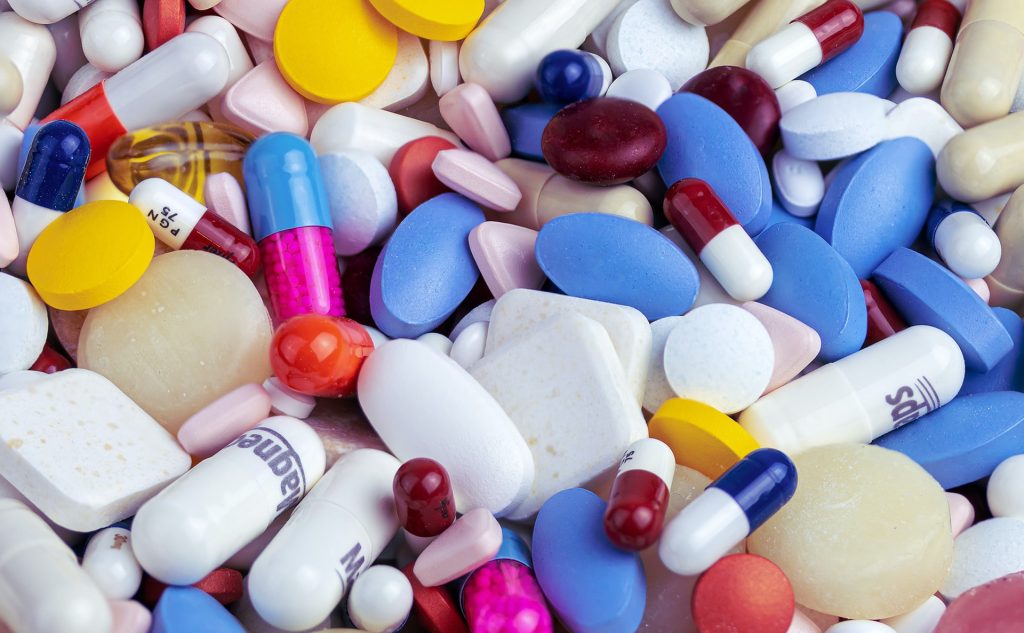Alarming Rise in HIV among Drug Users as Government Fails to Implement Policy
Needle programs are officially supported, but the state often obstructs them

Rates of HIV and Hepatitis C are “extremely high” among people who inject illicit drugs, according to new research by TB HIV Care. The organisation tested over 1200 injecting drug users in Tshwane, eThekwini, Mashishing and Mbombela (formerly Nelspruit).
In Tshwane 72% tested positive for HIV and nearly 90% had antibodies for hepatitis C virus (HCV), which could indicate past or present infection.
HCV is a blood-borne virus which damages the liver. When left undiagnosed it can be fatal, though it’s usually curable if treated.
Less than half of those who tested positive for HIV in Tshwane were aware of their HIV status. As such they would not have been on treatment and could have been spreading the virus without knowing.
| Survey Site | HIV Prevalence among people who inject drugs | Antibodies for Hepatitis C among people who inject drugs | Share of HIV positive people who knew their status |
|---|---|---|---|
| eThekwini | 49% | 75% | 76% |
| Mashishing | 45% | 41% | 77% |
| Mbombela | 30% | 91% | 64% |
| Tshwane | 72% | 89% | 48% |
People who inject drugs (such as heroin) are at a higher risk of contracting HIV and HCV when needles are shared – something which happens because drug users don’t have easy access to new ones.
This has long been a problem in South Africa and appears to be getting worse. Research conducted in eThekwini in 2013 found that 17% of injecting drug users were HIV-positive. According to the new research, a decade later the figure has nearly tripled to 49%.
Professor Harry Hausler, CEO of TB HIV Care and a former technical advisor to the National Department of Health on TB/HIV, believes the main reason for this “massive” uptick in blood-borne diseases among drug users is “the limited access to needle and syringe programs” in the country.
Government ignored its own solution
Research shows overwhelmingly that providing clean needles to drug users reduces the spread of HIV, not only by removing the need to share injecting equipment but often because needle programs offer other services such as health education and condoms.
A large review published in 2017 identified 133 academic studies on needle and syringe programs (commonly known as NSP). The results were “supportive of the effectiveness of NSP in reducing HIV transmission among [people who inject drugs], as well as in reducing HCV infection, although the latter to a lesser extent”.
South Africa’s Drug Master Plan, government’s official policy document for managing illicit drug use, explicitly endorses needle and syringe programs, as does the National Strategic Plan on HIV, TB and STIs.
Yet despite these formal policy commitments, there is virtually no public funding for such interventions.

One exception is the Pretoria-based Community Oriented Substance Use Program, sponsored by the Tshwane Municipality. It has been left to non-profit groups, such as TB HIV Care, to provide these services. According to Hausler, the organisation currently provides clean needles to nearly 10 000 injecting drug users in Cape Town, Nelson Mandela Bay, eThekwini, Tshwane and Mbombela.
Users access needles from drop-in centres as well as mobile clinics – usually vans that get driven on set days to areas where injecting users congregate. Users discard their old needles in specialised bins provided by TB HIV Care. They will then receive a pack, which includes clean needles, alcohol swabs and sterile water.
Nurses are present at the mobile clinics so users can also get tested for HIV and HCV. They also offer ordinary medical services, such as cleaning and bandaging wounds.
Mobile clinics are also manned by psychosocial and human rights workers, and peer educators (people who were beneficiaries but now work for TB HIV Care) from whom users can get counselling or report abuses.
“We’re not just a needle provision organisation”, says Loraine Moses, who oversees quality standards for the program. “We’re a health services organisation”. Users have to register with peers and get health counselling and education before getting their needles, she says.

Beneficiaries have access to various amenities at TB HIV Care’s drop-in centres, including showers, lounging areas and washing machines.
Needle program as a first step to rehab
In many cases, needle and syringe programs also provide a first point of contact for people who want to stop using drugs.
Anthony (surname withheld), previously a heroin user for 15 years, who now volunteers for TB HIV Care, spoke to GroundUp at a drop-in centre in Cape Town.
“In the beginning, I started experimenting with friends in school [but] after my mother passed away, I found that there are those properties in [heroin] that calm you and numb pain, so that’s when I started to delve [into the drug] more.”
After ending up on the street and becoming “a slave to that drug”, he increasingly wanted to get sober. Fetching needles from a TB HIV Care site, he began speaking with one of the peers. The person told him about TB HIV Care’s opioid agonist program, which helps users to quit or reduce their heroin intake.
Opioid agonists are drugs which block heroin withdrawal. Methadone is the most widely known. Numerous clinical trials show that initiatives which offer methadone to heroin users over an extended period are more effective than rehab programs that force users to quit cold turkey.
Hausler says that TB HIV Care currently provides methadone to over 1100 people. Along with the medicine, they receive counselling and are assisted with finding shelter, and in some cases to reintegrate with their families.
Anthony says he’s been taking methadone since June last year. The program also helped him link up with a shelter and get an ID document so that he could find work.
“Being a client at TB HIV Care has helped me a lot to reintegrate back into society,” he says. “Being on the street, you lose a lot of yourself”.

A notice board at the TB HIV Care drop-in centre in central Cape Town.
Law enforcement continues to confiscate needles
Local governments have assisted TB HIV Care with some of its services. The City of Cape Town provides the HIV tests for use at mobile clinics, according to Hausler.
And yet, not only has the government failed to directly fund the sterile needle programs but in some cases it appears to work against them.
Research carried out by TB HIV Care shows that users frequently have their injecting equipment confiscated by law enforcement officers.
In Tshwane and eThekwini more than half of all people surveyed said that the authorities had seized or destroyed their needles at least once in the previous six months.
| Outcome | Mashishing | Mbombela | eThekwini | Tshwane |
|---|---|---|---|---|
| No | 57% | 76% | 31% | 36% |
| Yes, In the last 6 months | 18% | 20% | 64% | 54% |
| Yes, but not in the last 6 months | 25% | 4% | 5% | 10% |
Results of survey question: Have you ever had your needles and syringes confiscated or destroyed by a police officer/law enforcement? Source: TB HIV Care
“What’s very frustrating is that there are two arms of government,” says Hausler. “There’s health and then there’s police. And police are confiscating needles and syringes that we’ve been providing to clients – [even though what we’re doing] is a clearly endorsed health intervention.”
Hausler notes that in some cases the organisation has “really good alliances with local police”, but in other cases it is a constant battle.
“There needs to be better mainstreaming of education of officials across all government departments on the … HIV and TB response [plans],” says Hausler. “If people were really sensitised, we would not run up against as many obstacles.”
Asked for comment, Gauteng SAPS spokesperson Lieutenant Colonel Mavela Masondo told GroundUp that “possession of needles is not a criminal offence. Therefore, we cannot arrest a person [for] possession of needles, and neither can we confiscate needles”.
Note: The full report by TB HIV Care, which received assistance from the United States CDC, is not yet publicly available. A 16 page summary of some of the findings can be found here.

Professor Harry Hausler, CEO of TB HIV Care, at his office in Cape Town.
Republished from GroundUp under a Creative Commons Attribution-NoDerivatives 4.0 International Licence.









